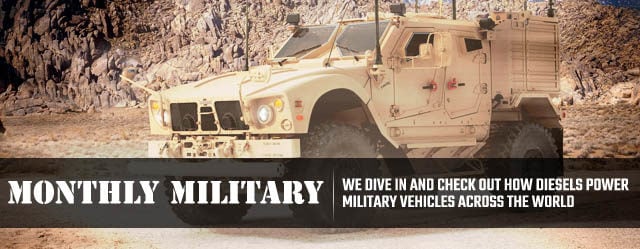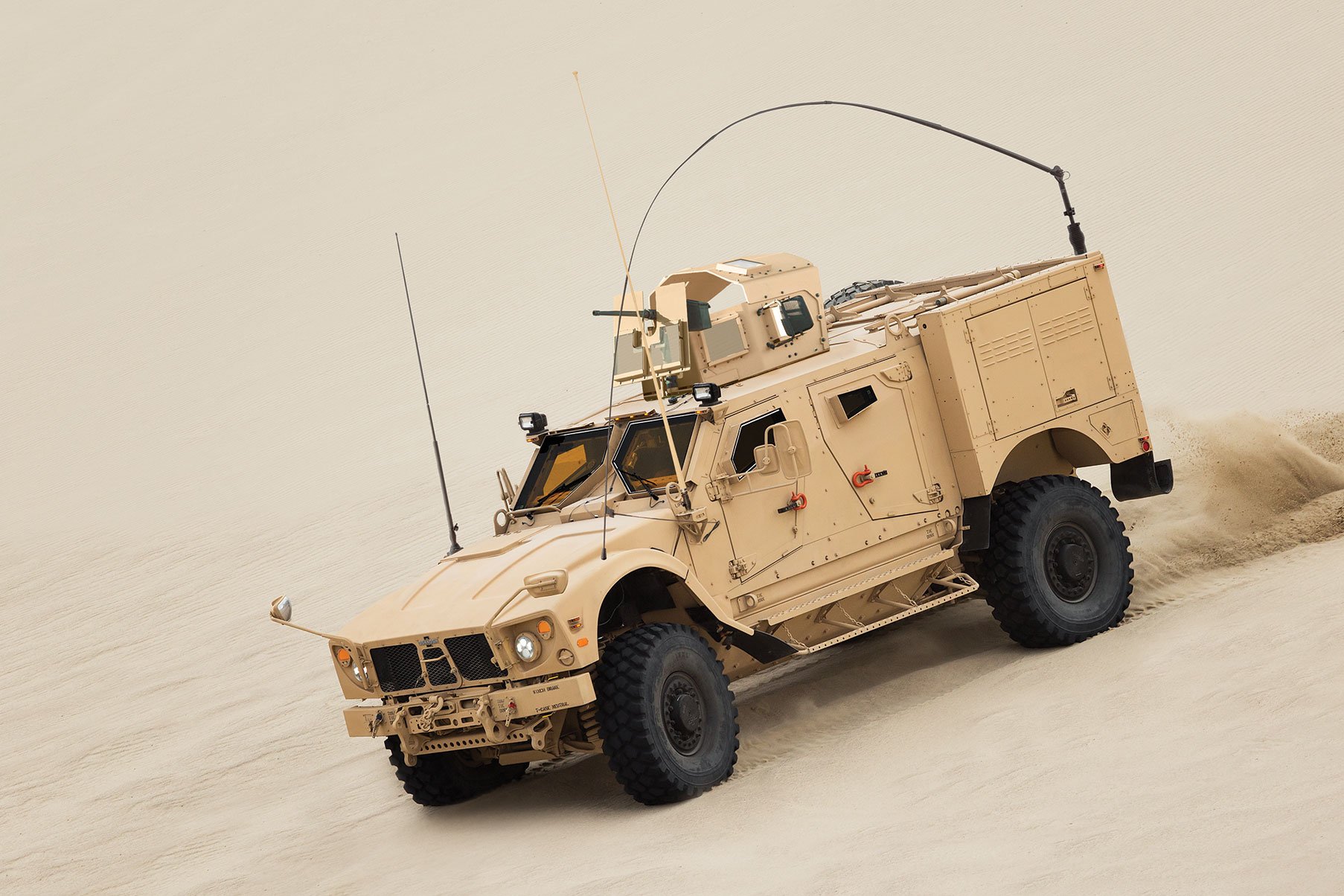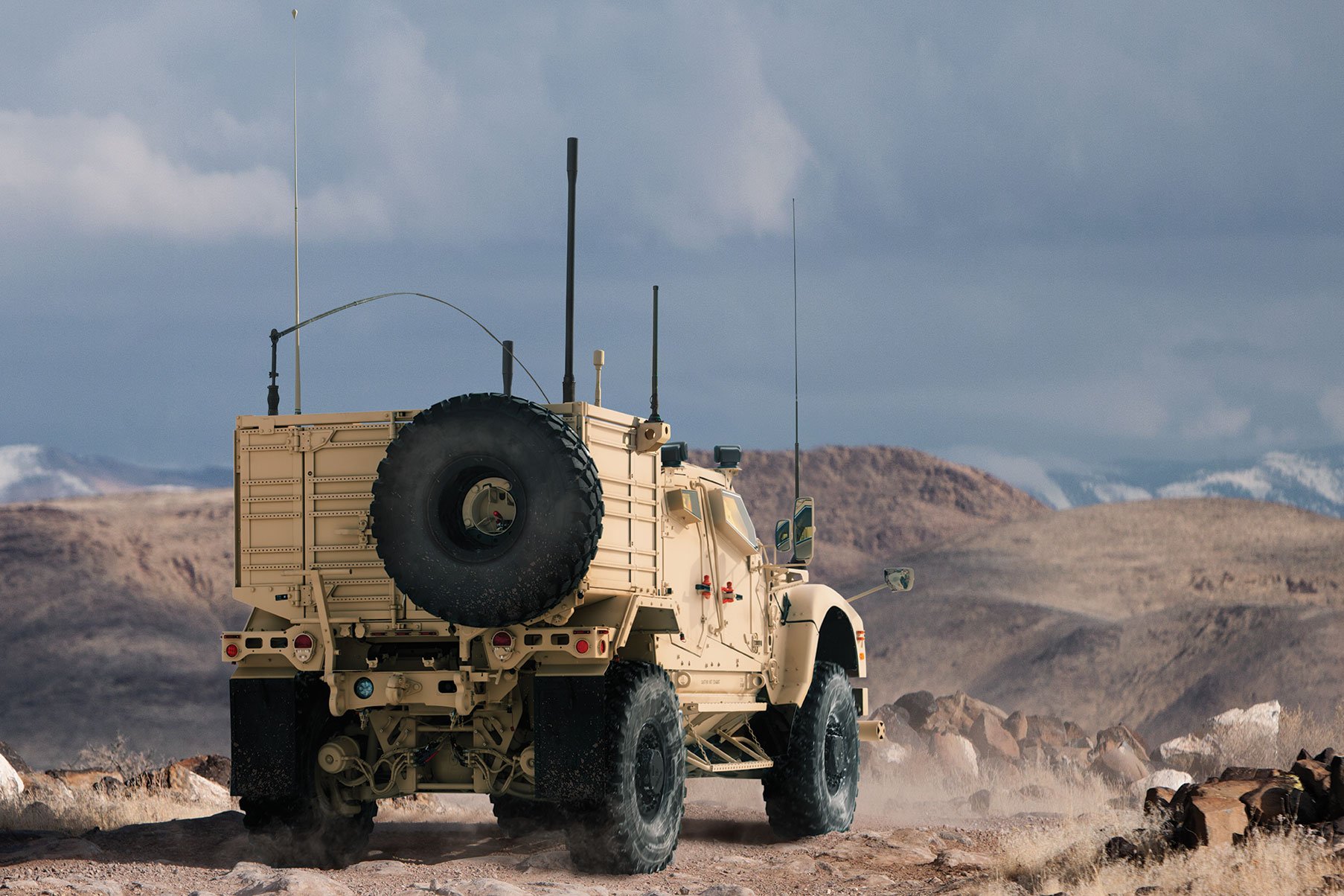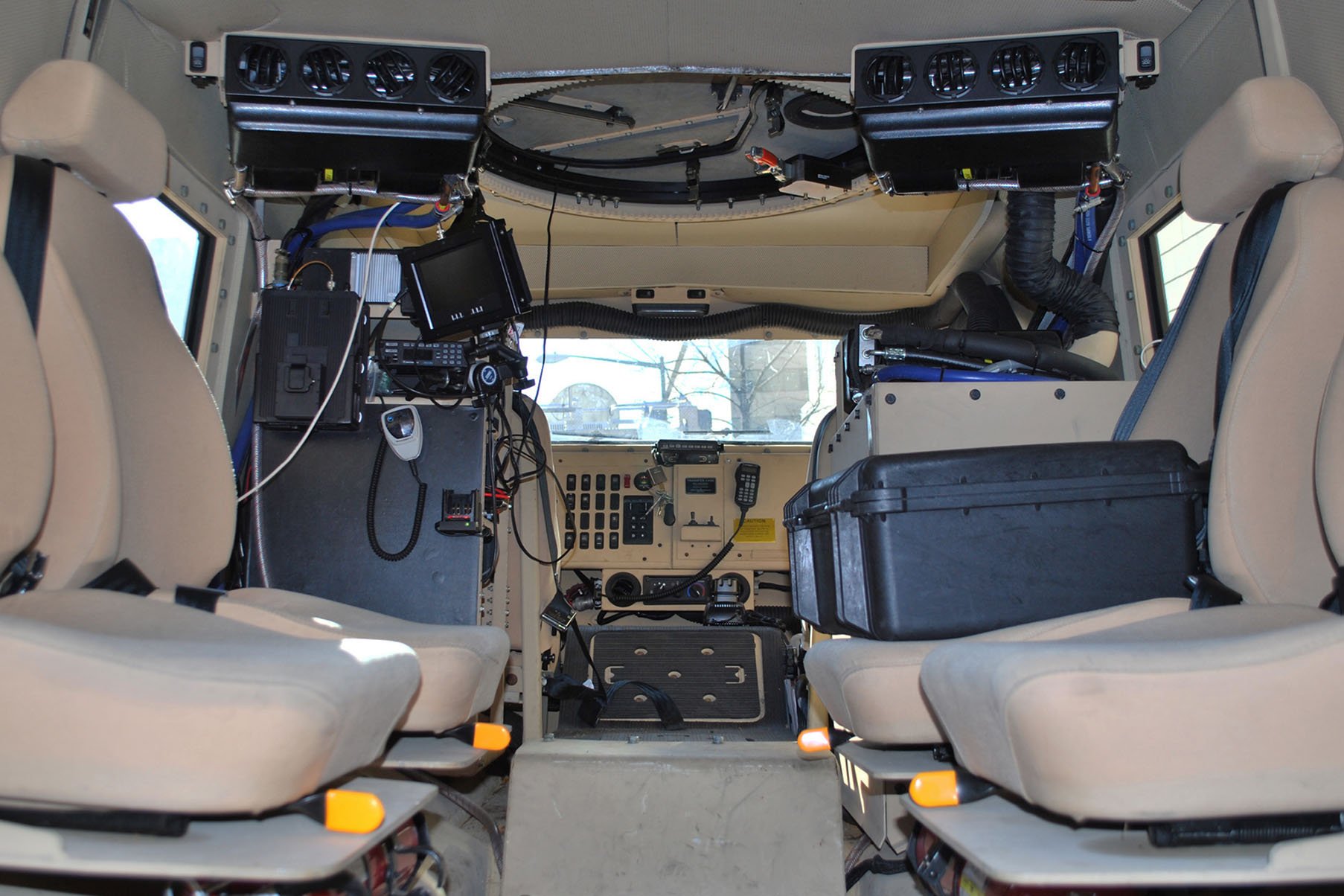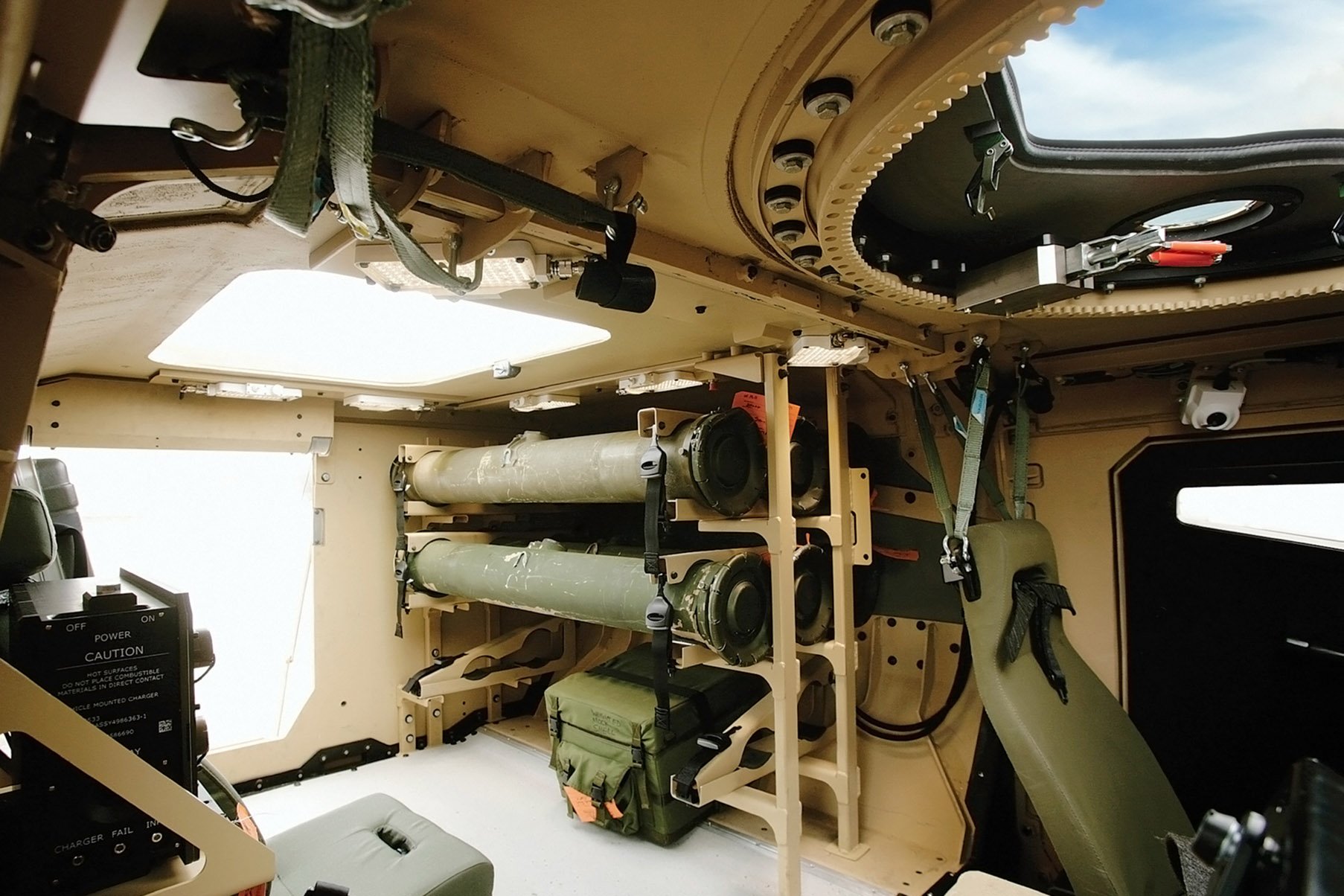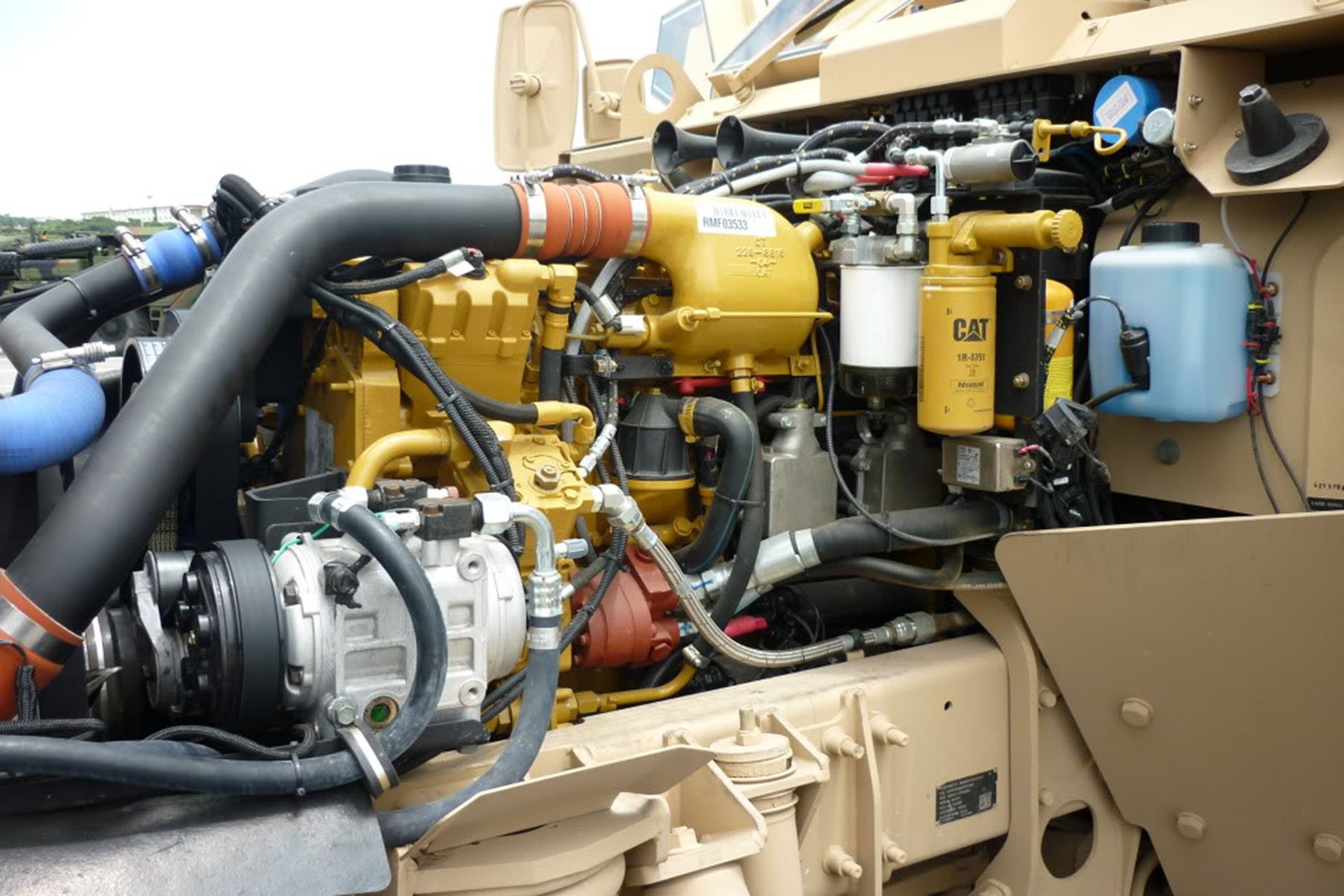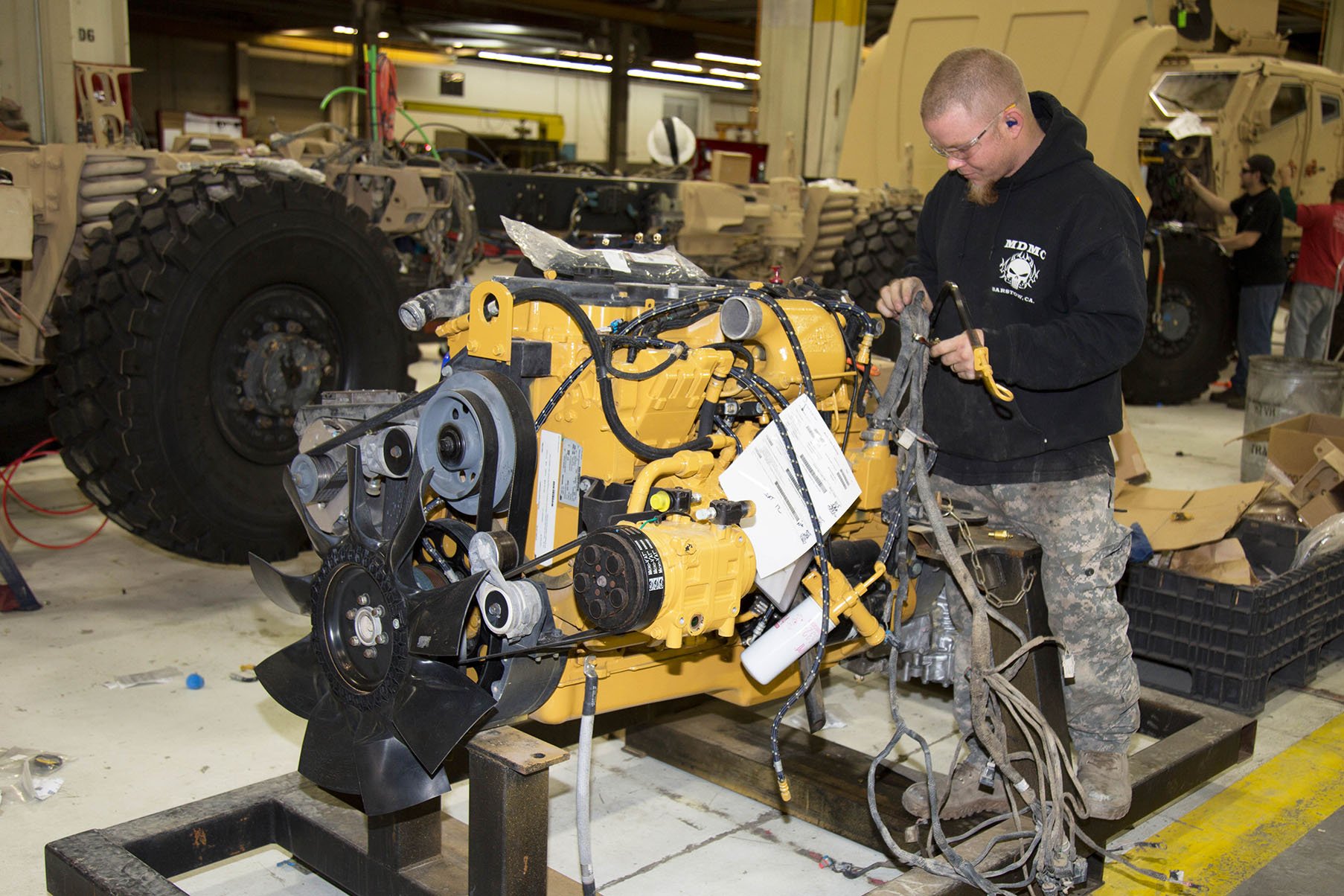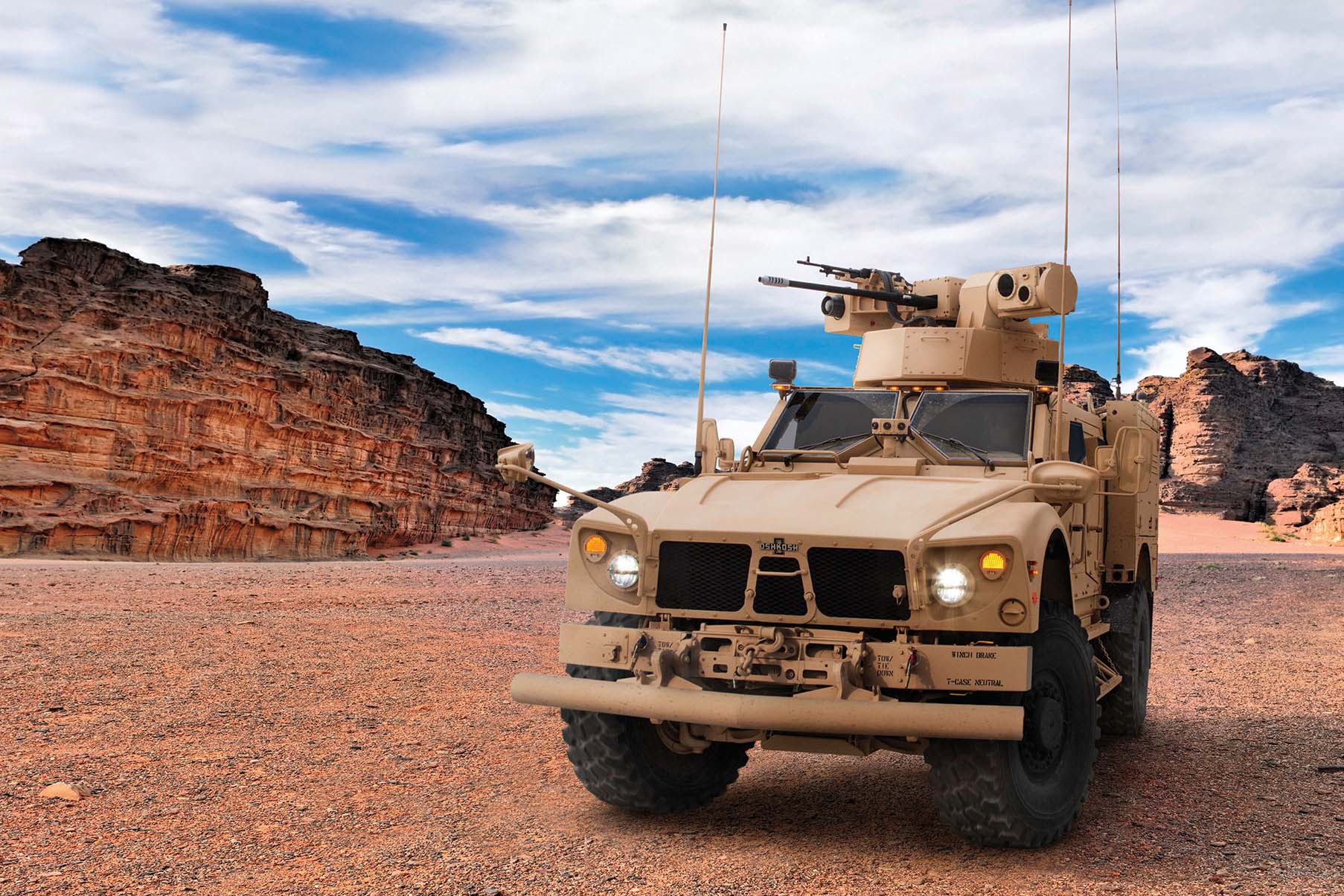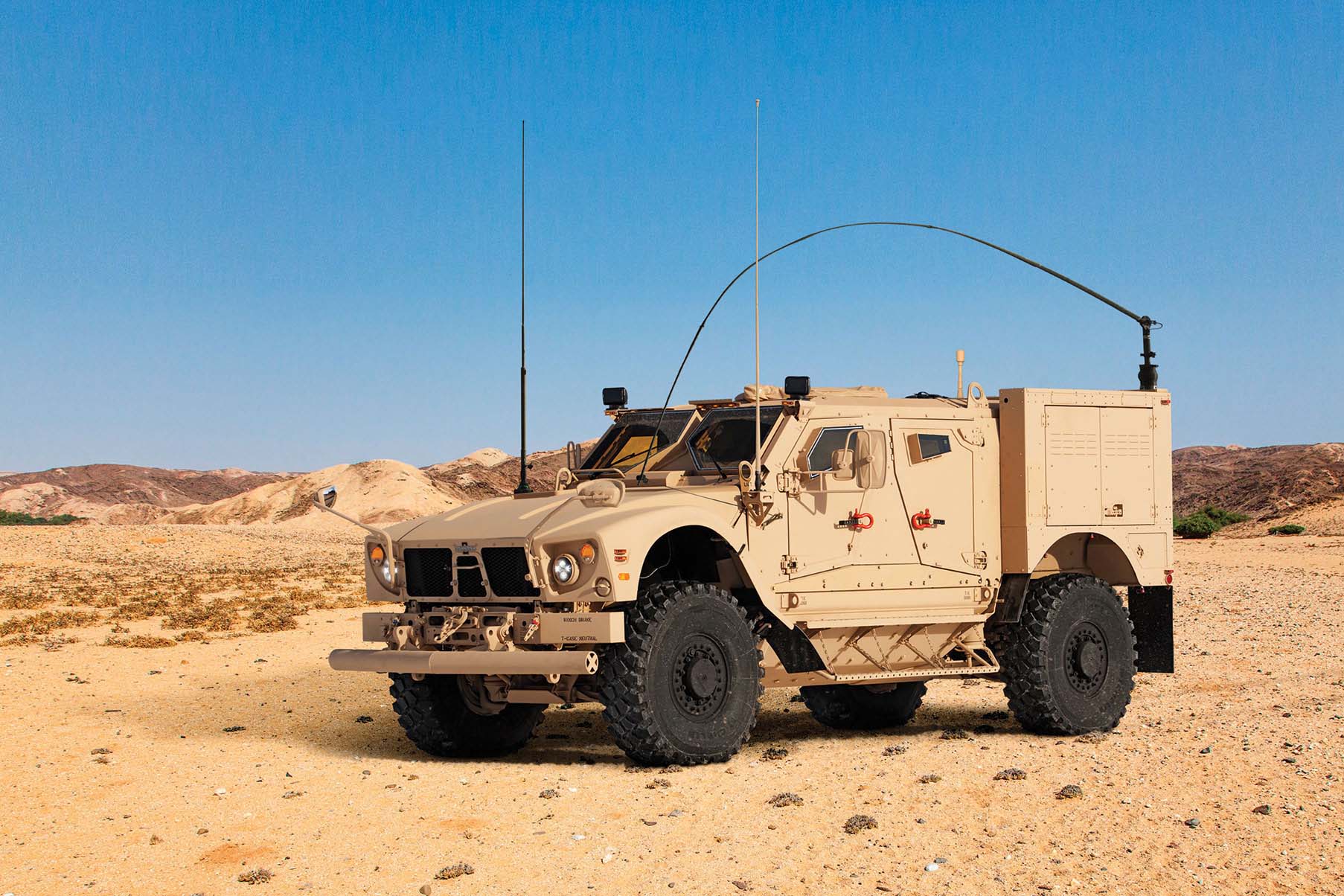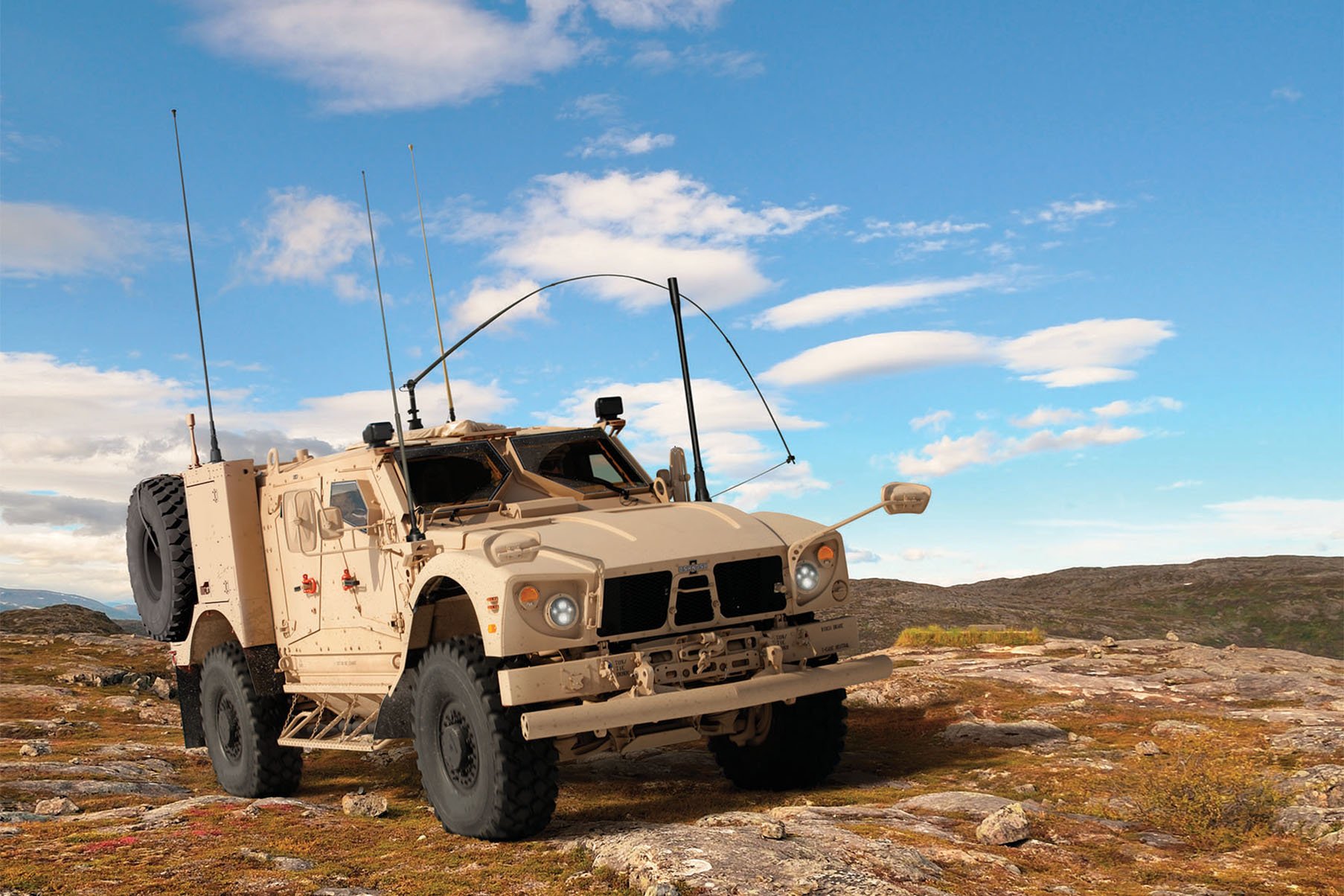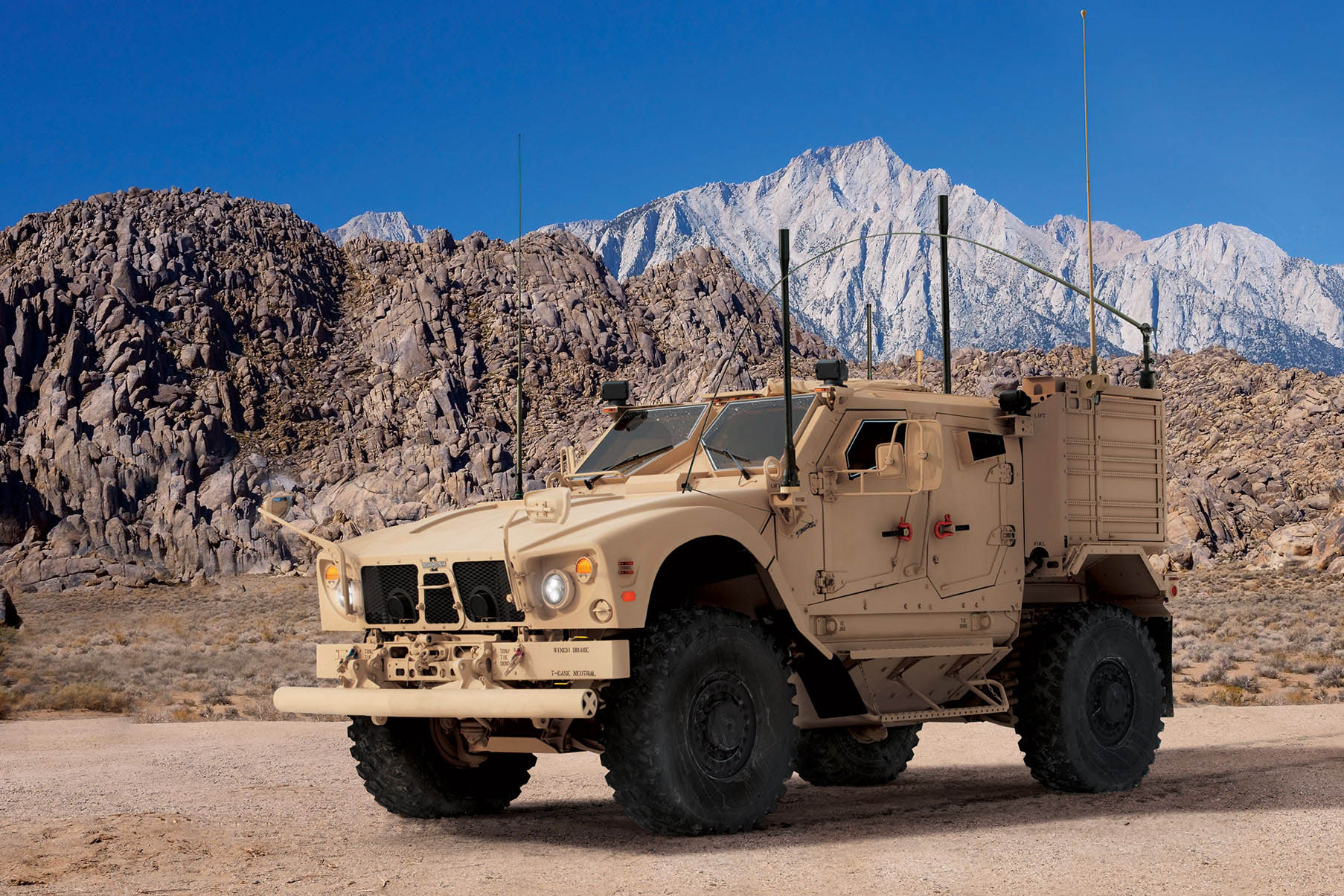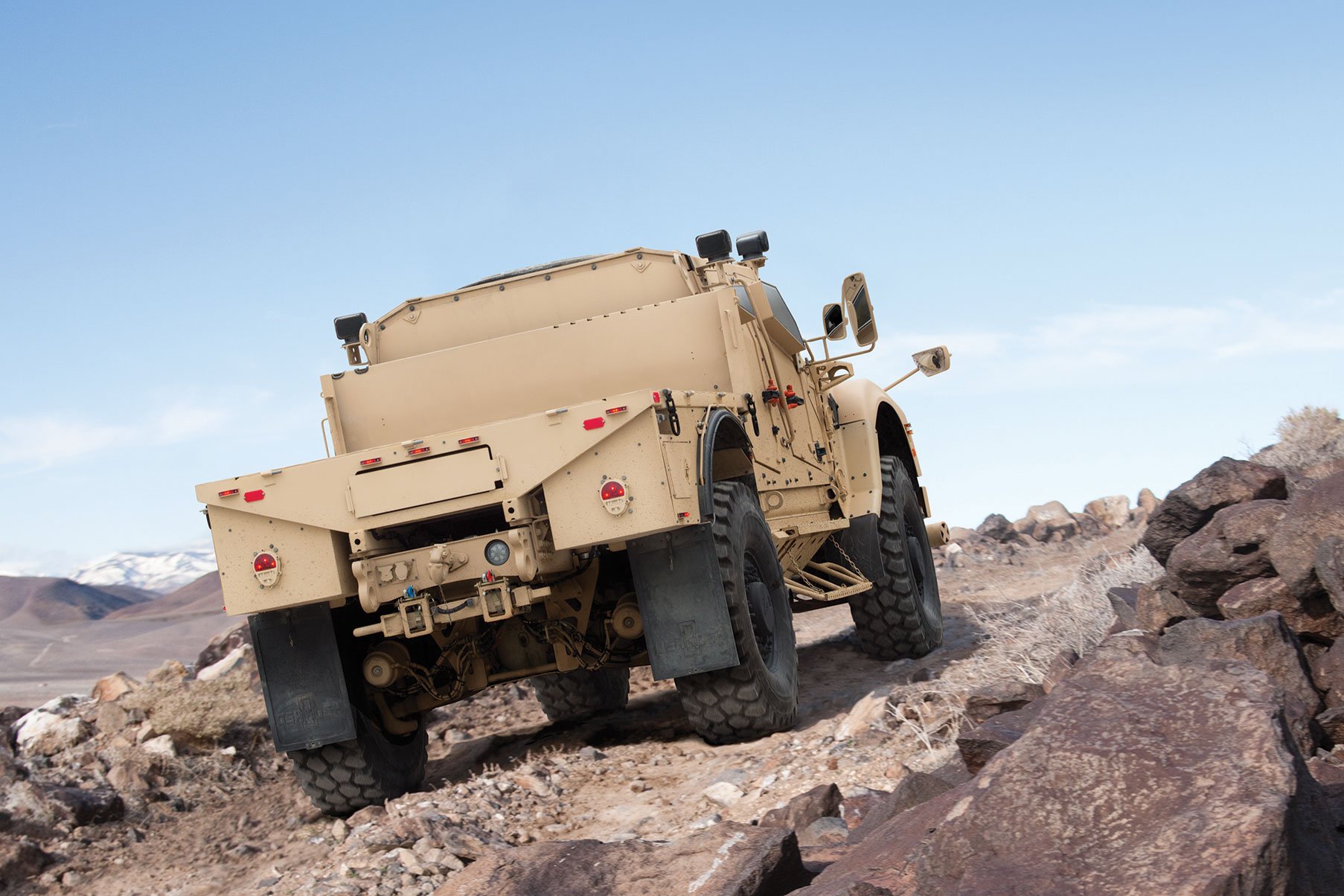In service since 1984, the HMMWV, or Humvee as it’s colloquially known, was starting to show its age by the time it saw operational use in Afghanistan and Iraq during the protracted post-9/11 conflicts that began in 2001. While the durability of the Humvee and its ability to handle difficult terrain initially won it praise from military personnel in the early phase of the conflict, a changing battlefield would soon reveal serious vulnerabilities in the Humvee, particularly when tasked with protecting soldiers from IEDs.
While the vehicle was hastily retrofitted to provide additional protection, those efforts would hamper the Humvee’s overall performance and capability. By the latter half of the decade it became clear that a more comprehensive solution was required.
In 2008, the Department of Defense (DOD) began looking into a replacement for the Humvee. The vehicle would need to be mine-resistant, nimble, well-protected, and able to traverse the inhospitable, mountainous terrain found in regions in and around Afghanistan.
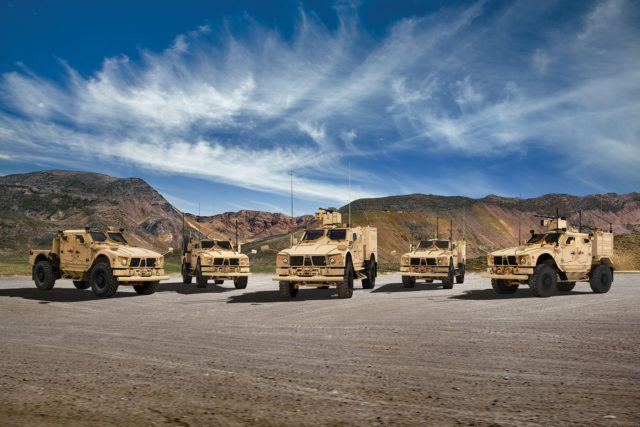 [2]
[2]Since its initial debut in 2009, Oshkosh has expanded the M-ATV lineup to include five distinct variants. Each is designed with specific roles in mind.
By the end of that year, a formal request for proposals was issued, and six manufacturers offered up designs for evaluation the following year. These mine-resistant all-terrain vehicles were put through a battery of tests throughout early 2009, and the DoD wound up awarding a single Indefinite Delivery/Indefinite Quantity (ID/IQ) contract to Oshkosh for its design.
The Oshkosh M-ATV was chosen because it had the best survivability and because Oshkosh had the most robust technical and manufacturing capabilities among all the competitors involved. It probably didn’t hurt that their bid was the second lowest, either.
The Oshkosh M-ATV went into production in July 2009. Since then, roughly 10,000 examples of the new MRAP all-terrain vehicle have been built. With hundreds of thousands of Humvees still in operation today, the M-ATV will be used alongside the Humvee for the foreseeable future, but the advantages it offers over its iconic predecessor are numerous.
Design and Powertrain
The M-ATV uses Oshkosh’s MTVR chassis from its series of medium tactical vehicles. It utilizes the company’s TAK-4 double wishbone, fully independent suspension system, a setup that provides up to 16 inches of travel.
The undercarriage of the M-ATV sports a V-shaped, Plasan-armored hull which is designed to deflect blasts from IED attacks, while a central tire inflation system allows the vehicle to travel up to 30 miles at 30 mph even if two of the tires have lost pressure.
The M-ATV is designed to operate in temperatures ranging from -32 degrees Celsius (-26 degrees Fahrenheit) to 54 degrees Celsius (130 degrees Fahrenheit) and can ascend 60 percent grades and traverse 30 percent side slopes, boasting roughly 16 inches of ground clearance depending on configuration.
The standard M-ATV can accommodate a crew of five (four in standard seating and one gunner) and features a modular roof turret that can be equipped with a variety of different weapons. These include the BGM-71 TOW anti-tank guided missile launcher, M240 machine gun, Mk 19 grenade launcher, and other options, all of which can be operated from the turret itself or from within the cabin via a CROWS remote weapon system.
Survivability is at the top of the list of priorities for the M-ATV’s design. The vehicle is designed to be able to continue on for at least another kilometer after taking a 7.62mm round to the engine oiling, cooling, or hydraulic systems, while an engine fire suppression system further improves the durability of the M-ATV.
While its cabin isn't likely to be confused with a Bentley Bentayga's anytime soon, the Oshkosh M-ATV's interior is designed to be far more livable than that of the Humvee. It has severe-duty HVAC systems, mobile device charging ports, and reasonably comfortable, blast-resistant seats. With its fully independent suspension system, the M-ATV is said to be an improved experience from behind the wheel as well. Images: Flickr, Wheelspage
Modern production vehicle features like traction control and anti-lock brakes also bolster the Oshkosh’s overall capability. Creature comforts like mobile device charging ports avoid the potential reliability issues that can occur when wiring is spliced after delivery to accommodate such requirements.
At 8.75 feet tall, 8.175 feet wide, and more than 20 feet long, the Oshkosh M-ATV is larger than the Humvee in virtually every dimension and outweighs it more than four times over. However, by leveraging more tech, its capability and ease of use far exceed that of the HMMWV.
The M-ATV's 7.2-liter Caterpillar C7 turbocharged diesel powerplant generates more than twice the grunt of the turbodiesel V8 found under the hood of the Humvee. However, due to its substantial armor and additional equipment, the M-ATV also has far more weight to contend with, resulting in a power-to-weight ratio of 25 horsepower per ton.
Under the hood of the Oshkosh M-ATV lies a 7.2-liter Caterpillar C7 six-cylinder turbodiesel powerplant that generates 370 horsepower and 925 lb-ft of torque – gains of 40 horsepower and 75 lb-ft over the standard-use Caterpillar C7 at the time, which were provided by a turbocharger upgrade and requisite ECU tweaks.
That engine is mated to an Allison 3500SP six-speed automatic transmission that allows for manual shifting. It’s a combination that allows the roughly 13-ton vehicle to reach an electronically limited top speed of 65 miles per hour with an operational range of 320 miles.
Variants and Production
Currently, there are five production variants of the Oshkosh M-ATV, as well as a 6×6 “Technology Demonstrator,” the latter of which features expanded interior volume to accommodate three crew members and 8-12 troops.
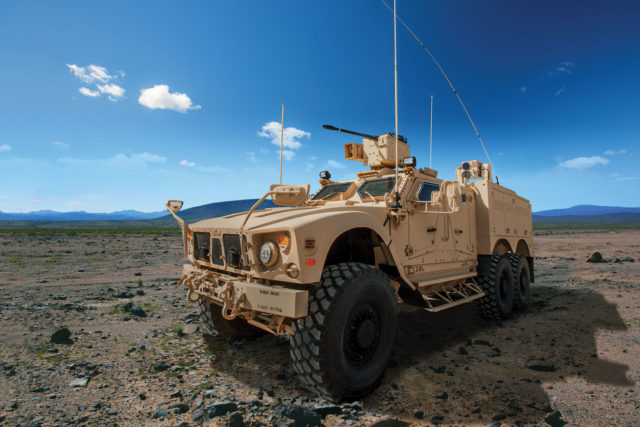 [10]
[10]The Oshkosh 6×6 Technology Demonstrator was unveiled at AUSA in Washington, D.C. on October 12th, 2015. Oshkosh says the 6×6 is “multi-mission ready, allowing crews – whose roles may rapidly change – to have the right vehicle to perform that mission.” Featuring all-wheel steering, the largest (potential) variant of the M-ATV can accommodate up to 15 soldiers.
The 6×6 is said to maintain the same top speed and turning radius as the 4×4 while supporting a larger payload capacity (12,000 pounds versus the 4×4’s 4000 pounds).
The official variants currently in production are as follows:
M-ATV Engineer – Riding on an extended wheelbase that expands interior volume, the Engineer variant provides storage and equipment for the deployment of robotic equipment.
The Engineer variant (left) and Assault variant (right) both employ an extended wheelbase for increased interior volume. But where the Assault configuration is designed for the rapid deployment of a larger number of troops than a garden-variety M-ATV, the Engineer variant is intended to provide storage, maintenance, and deployment equipment for the use of robots for bomb disposal and other high-risk tasks.
M-ATV Assault – Like the Engineer variant, the M-ATV Assault utilizes an extended wheelbase, but its configuration is designed for the rapid deployment of troops. Two drop-down hatches offer quick ingress and egress through the rear of the vehicle, while a double-door roof hatch allows for vertical deployment as well. Its modular seating configurations accommodates up to 11 crew members.
The Command, Special Forces, and Utility variants, seen here from left to right respectively, can all be configured with a roof-mounted, fully armored, single-person capsule protection system with integrated blast protection. With its flatbed platform and ISO lock corner fittings, the Utility variant can move a variety of cargo and weaponry.
M-ATV Command – This variant also uses an extended wheelbase configuration, along with expanded storage space to provide more versatility.
M-ATV Special Forces – This variant incorporates a larger windshield for improved visibility, along with a protected cargo area that’s accessible through a hatch in the rear capsule wall.
M-ATV Utility – This variant utilizes a flatbed platform and bolstered payload capacity, making it the most hauling-focused configuration of the five.
What Lies Ahead
In 2013, Oshkosh announced it would be integrating its TerraMax system into the M-ATV. The Terramax system is an autonomous/unmanned ground vehicle technology developed for reconnaissance missions and freight transport in high-risk areas, as well as route clearance and counter-IED missions.
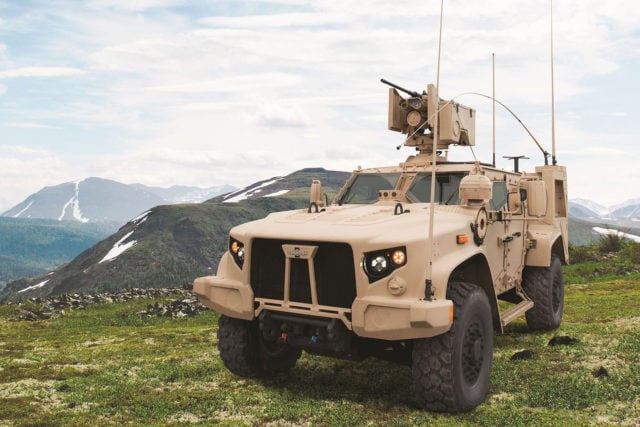 [16]
[16]While the M-ATV is seen as a huge step forward in durability, user-friendliness, and overall capability versus the Humvee, it has still received some criticism for its bulk and cramped interior quarters. Oshkosh sought to address many of these issues in its development efforts for the Joint Light Tactical Vehicle program, resulting in the upcoming L-ATV, which should weigh roughly half that of the M-ATV. However, since these vehicles were designed around different roles, it’s likely that L-ATV production will run concurrently with the M-ATV, rather than supplanting it.
While production of the M-ATV is ongoing, in 2015, Oshkosh was also awarded the contract for U.S. military’s Joint Light Tactical Vehicle program, which sees design elements of the M-ATV applied to a smaller Light Combat Tactical All-Terrain Vehicle (L-ATV) design that has significantly less mass and is more maneuverable than the M-ATV. The Oshkosh L-ATV is tentatively scheduled to go into production alongside the M-ATV in 2019.
